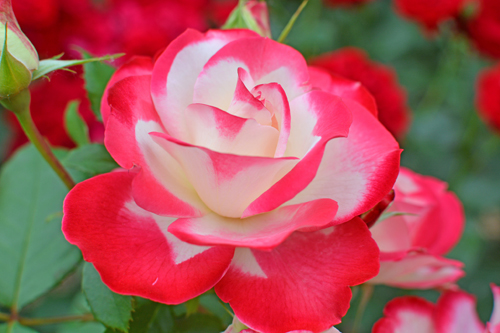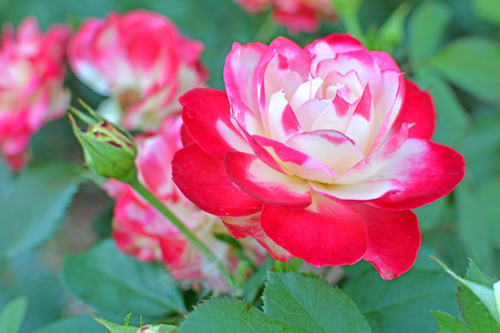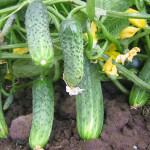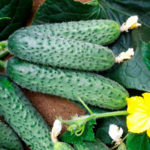Rose Jubilee of the Prince of Monaco (Jubile du Prince de Monaco)
Floribundas are a popular and widespread group of roses that are renowned for their relative simplicity and abundant, long flowering. Today, breeders have created a great variety of varieties from this group, but our heroine, in all respects, is invariably included in the six or eight of the best floribundas. This alone is worth writing about her!

History of creation
The French nursery Meilland, famous in Europe, was the originator of this rose. We registered a new variety in 2000. The reference books say that when creating the Jubilee of the Prince of Monaco, seeds of the Jacqueline Nebut variety were used, pollinated with the pollen of Tamango's floribunda. It is worth noting that in Europe and in other regions of the planet, our heroine is widely known under other names. In particular, in the USA it is sold as a Cherry Parfait rose, and in Australia - Fire & Ice.
For almost two decades, this variety has been sold on the market, while it has managed to collect a considerable harvest of international awards. For example, in the same year 2000 he was awarded a silver medal at an exhibition in Madrid, and in 2007 he was awarded a gold medal at the international rose test in the USA.

What is so attractive about the Jubilee of the Prince of Monaco, which is often called a find for a gourmet gardener? Let's figure it out!
Description of the variety
Outwardly, the rose looks like a compact bush a little less than a meter high, looking neat throughout the season. This is facilitated by foliage: dense, dense, with a matte, light green surface. Stems are slender, straight, strong, greenish, lignified at the base.
But, of course, it is not shoots and leaves that make it possible to call Jubile du Prince de Monaco the queen of the flower garden. Its true decoration is flowers. They appear on the bushes in June, and with proper care they disappear only under the influence of autumn frosts.

It is a pleasure to watch this rose bloom! The dense, medium-sized buds are light at first, and only the edge of each petal has a reddish border. The brightness, saturation of this border gradually increases as the bud opens, turning into a flower up to 10 cm in diameter. Fresh petals (and there are 30-40 of them in a flower) are white-cream at first, with the already mentioned crimson border. But over time, the border expands, and the creamy shade turns into a light cherry. Indeed, in dynamics it resembles a struggle between cold, whitish ice and hot tongues of flame, in which the latter gradually win. In the midst of flowering, the bush of this variety resembles a whitish-crimson cloud. In addition, flowering is intense, dozens of flowers can be present on the shoots at the same time!
Features of agricultural technology
Surprisingly, with such outstanding decorative qualities, the Jubilee of the Prince of Monaco is distinguished by its unpretentiousness, ease of care, like all floribundas, by the way. It is winter-hardy, withstands the winter of central Russia with a small shelter. In summer, it is also not afraid of prolonged dry and hot periods, although on such days, of course, it is advisable to water the bushes and spray regularly.
If this variety has disadvantages, then it is relatively weak resistance against powdery mildew and black spot. However, these problems are successfully dealt with by modern drugs, which should not be forgotten to process your "Prince" in time.
A compact, abundantly flowering rose bush is usually used in mixborders, in small groups. It should only be remembered that the blossoming of the Jubilee of the Prince of Monaco will be spectacular, provided there is good illumination, as well as the absence of constant winds and drafts.









This rose has a second official name - "Anniversary of St. Petersburg". It was under this name that I acquired the rose (I learned the story of the “renaming” later). It is so beautiful that it is impossible to convey it in words - the bush is strong, neat, there are many flowers - they do not bloom at the same time, slowly, do not fade, they tolerate rains perfectly. The variety has excellent immunity - it rarely gets sick, and if I carry out preventive treatments, then it does not get sick at all. It hibernates well - I practice soil cover. The only nasty thing that spoils my roses are bronze beetles (they eat out both buds and flowers). Tell me how to deal with them?